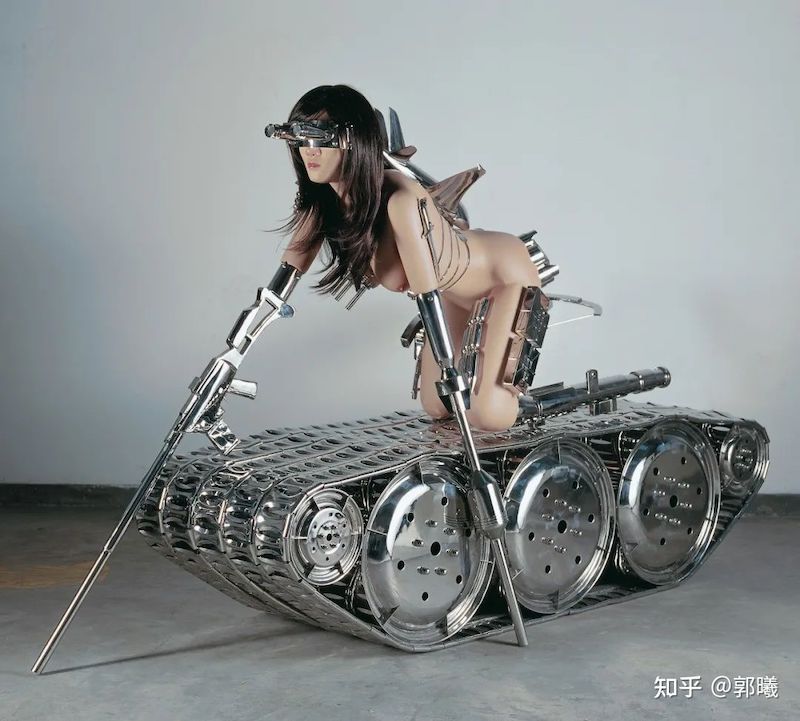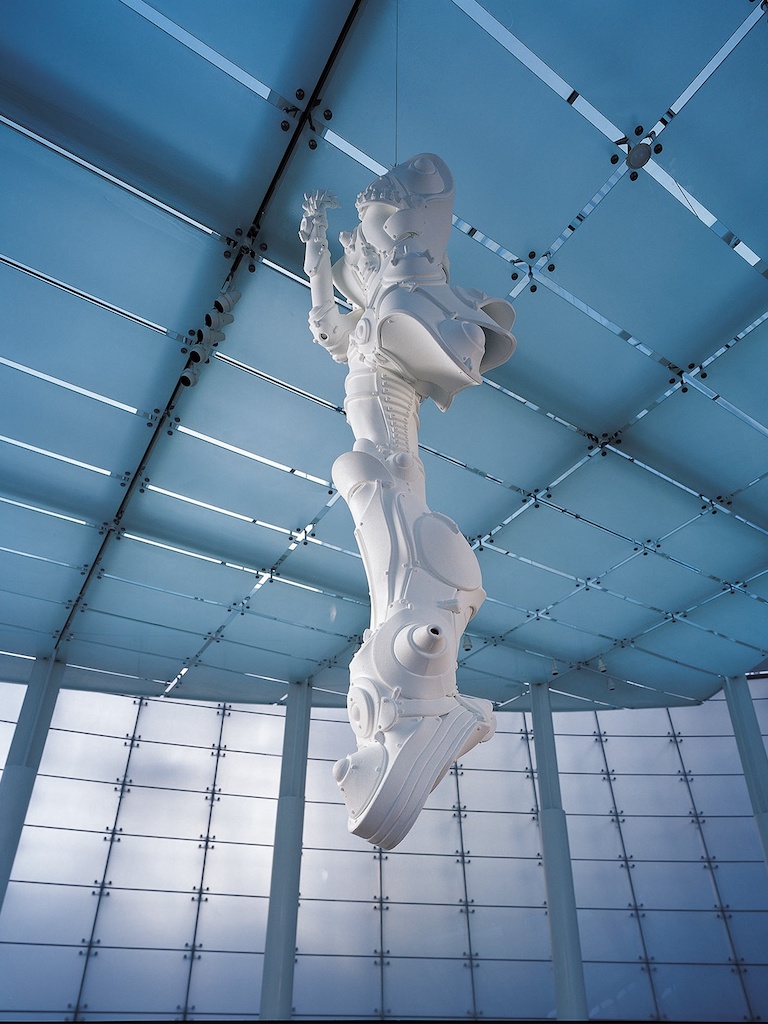“CY-CANDY”: FEMALE BODIES AND CYBORG THEORY IN THE WORKS OF FAN XIAOYAN AND LEE BUL
INTRODUCTION
This capstone uses a feminist approach to evaluate the contemporary sculptures of two East Asian female sculptors, Fan Xiaoyan and Lee Bul, in relation to dominant depictions of the female cyborg body as sexualized and objectified for the male gaze. These sexualized bodies function as cyborg “eye candy,” or “cy-candy,” for the visual pleasure of, and consumption by, the audience. I examine the sculpture series of Fan Xiaoyan and Lee Bul to evaluate how they respond to the male gaze, and if they are successful in undermining an eroticized viewing experience. Ultimately, this capstone explores if there has been a feminist articulation of the cyborg in East Asia, and if cyborg theory is relevant in the study of East Asian sculpture and global contemporary art more generally.
The first section introduces the theoretical and historical background for my study of cyborgs, beginning with the foundational theories of Donna Haraway in “A Cyborg Manifesto.” Though many scholars have written about Fan and Lee’s cyborg sculptures in the context of cyborg theory, I interrogate the usefulness of cyborg theory as a framework for interpreting their work. I then describe the East Asian origins of the cyborg in postwar Japanese popular culture, and the prototypes for the sexualized female body that Fan Xiaoyan and Lee Bul used as their starting point for the depiction of the cyborg. Using the illustrations of artist Sorayama Hajime and the well-known and influential anime Ghost in the Shell (1995), I illustrate how the sexualized female cyborg body is often presented in popular culture. The “sexy cyborg” present in these media is representative of the enduring power of the male gaze in East Asian cultures, as well as the commodification of the sexualized female body in media.
Fan Xiaoyan, the subject of the second section, responded to this “sexy cyborg” form in her series Physical Attachment (2008), which depicts nude female bodies combined with shiny mechanical attachments. Though the artist meant to uplift female bodies through this melding of body and machine, I argue that her series actually re-articulates the female cyborg within conventional constructions of sexual difference. Particularly, it presents the female body as an object of visual consumption, reinforcing the presence and power of the male gaze. Her series is therefore an unsuccessful attempt to create a feminist cyborg in East Asia. Section three discusses Lee Bul’s series Cyborg W1-W10 (1998-2006), which offers a more complex and ambiguous interpretation of the sexualized female cyborg form, as well as the applicability of cyborg theory. While her work epitomizes some of the tenets of cyborg theory, it also reveals the limits of the theory in fully examining East Asian art. Additionally, Lee Bul’s depiction of the sexualized female body is more resistant to the male gaze than Fan Xiaoyan’s, but the inconsistent methods of display complicate the view of her work as feminist.
This capstone uses a feminist approach to evaluate the contemporary sculptures of two East Asian female sculptors, Fan Xiaoyan and Lee Bul, in relation to dominant depictions of the female cyborg body as sexualized and objectified for the male gaze. These sexualized bodies function as cyborg “eye candy,” or “cy-candy,” for the visual pleasure of, and consumption by, the audience. I examine the sculpture series of Fan Xiaoyan and Lee Bul to evaluate how they respond to the male gaze, and if they are successful in undermining an eroticized viewing experience. Ultimately, this capstone explores if there has been a feminist articulation of the cyborg in East Asia, and if cyborg theory is relevant in the study of East Asian sculpture and global contemporary art more generally.
Fan Xiaoyan, Physical Attachment-04, 2008. Stainless steel and mixed materials. 208 x 96 x 136cm.
The first section introduces the theoretical and historical background for my study of cyborgs, beginning with the foundational theories of Donna Haraway in “A Cyborg Manifesto.” Though many scholars have written about Fan and Lee’s cyborg sculptures in the context of cyborg theory, I interrogate the usefulness of cyborg theory as a framework for interpreting their work. I then describe the East Asian origins of the cyborg in postwar Japanese popular culture, and the prototypes for the sexualized female body that Fan Xiaoyan and Lee Bul used as their starting point for the depiction of the cyborg. Using the illustrations of artist Sorayama Hajime and the well-known and influential anime Ghost in the Shell (1995), I illustrate how the sexualized female cyborg body is often presented in popular culture. The “sexy cyborg” present in these media is representative of the enduring power of the male gaze in East Asian cultures, as well as the commodification of the sexualized female body in media.
Fan Xiaoyan, the subject of the second section, responded to this “sexy cyborg” form in her series Physical Attachment (2008), which depicts nude female bodies combined with shiny mechanical attachments. Though the artist meant to uplift female bodies through this melding of body and machine, I argue that her series actually re-articulates the female cyborg within conventional constructions of sexual difference. Particularly, it presents the female body as an object of visual consumption, reinforcing the presence and power of the male gaze. Her series is therefore an unsuccessful attempt to create a feminist cyborg in East Asia. Section three discusses Lee Bul’s series Cyborg W1-W10 (1998-2006), which offers a more complex and ambiguous interpretation of the sexualized female cyborg form, as well as the applicability of cyborg theory. While her work epitomizes some of the tenets of cyborg theory, it also reveals the limits of the theory in fully examining East Asian art. Additionally, Lee Bul’s depiction of the sexualized female body is more resistant to the male gaze than Fan Xiaoyan’s, but the inconsistent methods of display complicate the view of her work as feminist.
Lee Bul, Cyborg W6, 2001. Hand-cut EVA panels on FRP, polyurethane coating, 232 x 67 x 67 cm. Photo: Kim Hyun-soo. Photo Courtesy: Leeum, Samsung Museum of Art.


